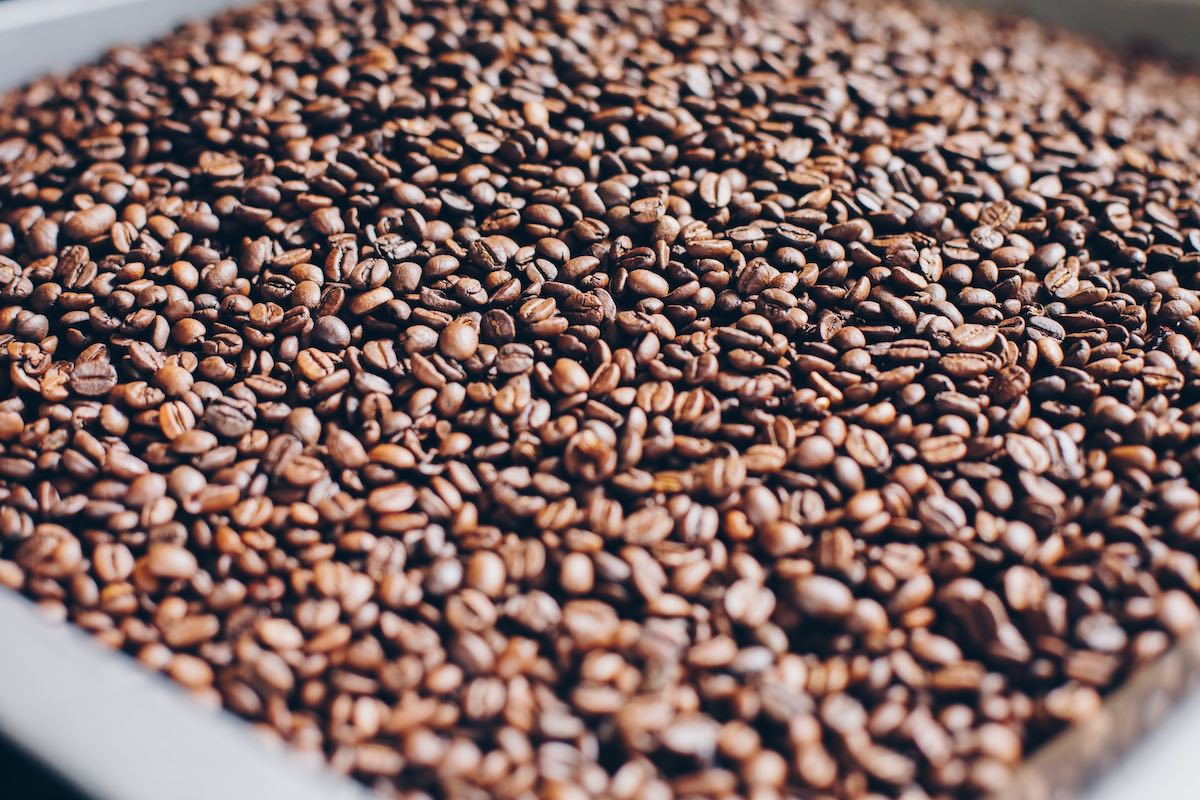

If Ethiopian coffee beans are your favorite, you may be curious about the country’s intriguing history and modern culture. You no doubt want to know how to brew a cup of Ethiopian coffee to perfection, too.
Well, you’re in the right place. We happened to do a little research to give you a glimpse into Ethiopia’s rich coffee culture – past and present. This East African country is known as the birthplace of java and produces some of the best single-origin coffees on planet Earth. It’s where Arabica coffee originated before spreading across the globe over the centuries.
Hang on as we dive into Ethiopian myth, legend, history, and coffee culture. You’re in for a treat.
On Deck (Table of Contents)
There’s an old legend in Ethiopia of a goat herder named Kaldi. He supposedly was the one to discover the first coffee plant around 850 A.D. Well, the first human, that is. He noticed a sudden burst of energy in his goats after they ate berries off an unfamiliar tree. They ran, butted heads, and danced on hind legs, bleating as they went.
Curiosity got the best of Kaldi as he popped some berries in his own mouth and experienced a similar sensation, resulting in songs and poetry. Kaldi told his father what he found, and word spread until the coffee plant became a regular part of Ethiopian culture.
Before discovering the modern drink we now call coffee, Ethiopians may have started chewing beans for the caffeine. Next, they began brewing the leaves and berries in boiling water to create “tea.” They also ground the beans for snacking, fermented the pulp for wine, and lightly roasted the husks into qishr – a sweet drink. It was likely the people of Yemen who first adapted coffee into the drink we know and love today (Uncommon Grounds).
Ethiopians in many villages today serve their coffee in an elaborate, hour-long ceremony. The host – using coffee from his own trees – heats charcoals inside a clay pot. Attendees sit around on three-legged schools and converse while the host makes his rounds and his wife washes the green coffee beans, prepping them for roasting.
She throws frankincense on the coals and then places a flat iron disk on top, where she begins roasting the beans. The hostess waits until they crack and turn golden brown, then places them into a small mortar where she grinds them. She puts them back into a clay pot, this time with water, cinnamon, and cardamom. Once the coffee has brewed long enough, the hostess serves her guests a small 3-ounce cup with sugar.
Being invited to this social event is an honor and a sign of friendship and respect. Buna dabo naw as they say – or “coffee is our bread.” According to social anthropologist Alula Pankhurst, “It is so much part of the culture that it is a symbol of sociability, a metaphor for social relations and a vehicle for spiritual blessings” (Where the Wild Coffee Grows).
Ethiopia is in the “Horn of Africa,” a mountainous region split by the Great Rift Valley. Unlike many other parts of the world, coffee grows naturally here. It has the perfect environment and climate for Arabica coffee trees. Lush vegetation, rich soils, high elevations in mountainous regions, and chemical-free growing methods contribute to the country’s ideal growing conditions and wonderful flavors.
African coffees tend to be full-bodied and sweet, but Ethiopia is renowned for its bright, fruity, and floral coffees with high acidity and complex flavor notes. Farmers can use wet-processed and natural methods to remove the fruit. Try wet-processed (or washed) for a more complex cup. If you’re looking for a wild, more unusual fruity flavor, try dry processed (natural).
Both types of coffee could have citrus and floral notes that offer a delicate flavor and mild body. Depending on the region, your Ethiopian coffee could be heavy and winey or light and floral.
Ethiopia is the highest producing region in Africa and the fifth-largest coffee producer globally (behind Brazil, Vietnam, Colombia, and Indonesia). In 2020, Ethiopia produced 7.3 million 60-kg bags. Some of the top regions in Ethiopia for quality coffee are Sidamo, Guji, and Harrar.
Sidamo is home to many single-origin coffees. Wet processing is typical in this area, producing bright and highly acidic coffees with fruity and floral notes. Sidamo coffees tend to be rich and full-bodied with complex flavors and a soft finish. Quality Sidamo coffee tastes citrusy and well-balanced.
If you’re looking for a great decaf, check out our Fair Trade Certified Organic Sidamo. It’s heirloom and forest-grown and tastes just like our caffeinated Sidamo!
In eastern Ethiopia, Harrar produces mainly dry-processed coffees. Harrar coffee is fragrant and heavy-bodied. This wild, bold coffee can have complex, winey, and fruity flavors. You might also notice notes of jasmine, apricot, or blueberry. Roasters sometimes use Harrar for espresso blends.
Yirgacheffe is a small town in the Sidamo region. Many farmers use the wet processing to create bright, light-bodied coffees with floral and fruit notes. Yirgacheffe coffee can be sweet and spicy, have a vibrant aftertaste, and may have wine or berry undertones. It also makes delicious iced coffee!
Try our Ethiopia Organic Washed Yirgacheffe Abiyot Ageze for a lighter body and less earthy taste, notes of pulpy citrus and sweet peach, and strawberry undertones. For a more raw and wild tasting coffee with juicy berry and tart floral notes, try Organic Natural Yirgacheffe Abiyot Ageze.
Guji is a mineral-rich area just south of Sidamo in the Oromia region. Guji coffee is often complex and balanced. Since the Guji landscape is quite diverse, coffee flavor profiles can vary. Today, you can find wet-processed, natural, or honey-processed Guji coffees on the market.
Once you order your Ethiopian beans, it’s time to learn how to brew a cup you’ll look forward to every day. Here’s how:
We have a handful of Ethiopian brews on tap. You can stop by our shop and visit us if you live in the Virginia Beach area. Or browse our selection of beautiful Ethiopian coffee beans, including Sidamo and Yirgacheffe, online. Order today for fresh, specialty beans sent straight to your doorstep.


India is the sixth largest coffee exporter in the world. But it hasn’t always been that way. From smuggling a few measly coffee beans into

Coffee is a lot of things: comforting, energizing, tasty, even trendy. But did you know it also has an abundance of health benefits? If you